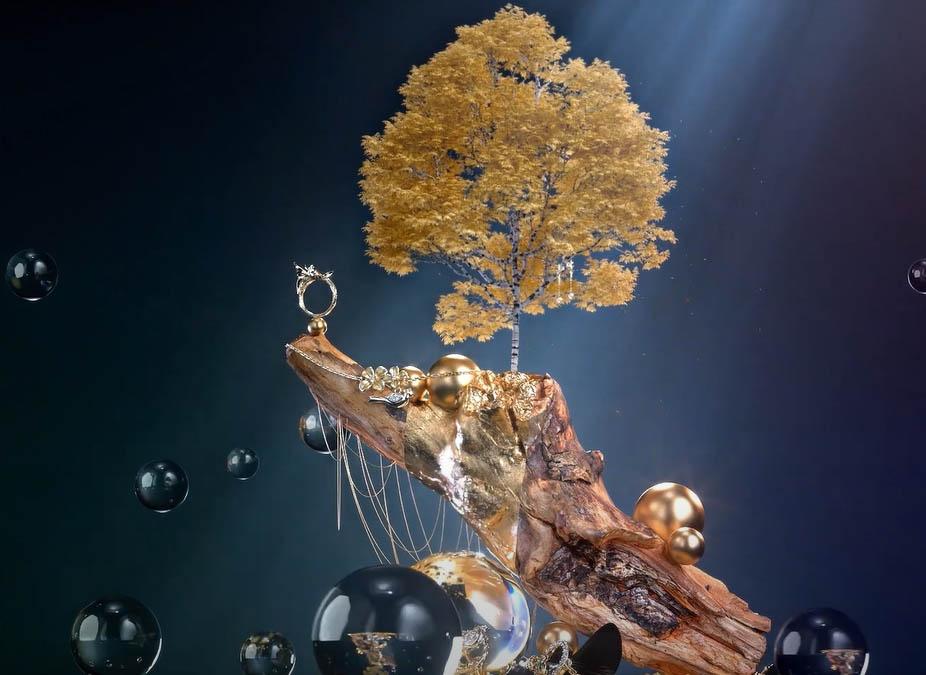For millennia, gold and silver have occupied the limelight in the jewelry world. Yet, another metal, as lustrous and timeless, has woven its way through history, adorning royals, celebrities, and ordinary folks alike: Platinum. Platinum doesn’t tarnish or corrode when exposed to air or water, making it a member of the ‘noble metals’ group. This property is one of the reasons it’s so prized for jewelry. So embark on a journey, tracing the history of platinum jewelry, highlighting its ancient roots, challenges, and the unparalleled elegance that has established it as a symbol of luxury and durability in today’s world.
From Ancient Egypt to Modern Elegance: The Timeless Appeal of Platinum
Platinum, often regarded as the ‘metal of kings,’ boasts a history as rich and profound as its silvery-white sheen. Let us embark on a captivating journey from the bylanes of ancient civilizations to the bustling modern-day fashion runways, exploring the ageless allure of platinum jewelry.
Ancient Beginnings:
South American Splendor:
While the Egyptians might have been among the first to use platinum, the ancient South American cultures took this admiration to new heights. The La Tolita culture in what is now modern-day Ecuador crafted intricate masks and amulets using a combination of gold and platinum, showcasing their appreciation for the metal and their advanced metallurgical techniques.
The European Renaissance:
For a time, platinum faded from the popular purview, only to be rediscovered by European alchemists and metallurgists in the 16th century. They called it “platina,” meaning ‘little silver,’ reflecting its stunning silvery appearance. During this period, platinum began its rise in the world of fine jewelry, with artisans and jewelers recognizing its potential for crafting exquisite pieces that stood the test of time.
Modern Elegance:
The 20th and 21st centuries heralded a new age for platinum jewelry. With advancements in refining techniques, platinum became the material of choice for setting precious gemstones, primarily due to its strength and neutrality. The purity and resilience of platinum made it a favorite amongst celebrities, royals, and anyone looking to make a statement of lasting elegance. From Hollywood A-listers’ engagement rings to royalty’s crowns, platinum’s presence was undeniable.
Unraveling the Platinum Tale: How the White Metal Captured Hearts and History
Platinum has carved a significant niche in the jewelry world with its unparalleled sheen and durability. However, its journey from being an obscure, lesser-known metal to the crown jewel of fashion is as fascinating as it is illuminating.
A Humble Beginning. Surprisingly, when the West first discovered platinum in the 16th century, it was often mistaken for an impurity in gold and was discarded. Little did those early metallurgists know that this ‘nuisance’ metal would one day overshadow gold in value and demand.
The Spanish Connection. It was in the alluvial sands of South America that Spanish conquistadors first stumbled upon platinum. Labeling it “Platina” or ‘little silver,’ they mainly remained indifferent to its potential, paying more attention to the gold and emeralds of the New World. However, the region’s indigenous people had long understood platinum’s worth, employing sophisticated techniques to work with the metal and integrate it into their ornate artifacts.
European Enlightenment. By the 18th century, Europe had begun to understand and appreciate platinum’s unique properties. Esteemed scientists like Antonio de Ulloa and metallurgists like François Chabaneau were amongst the first to study and refine this metal, bringing it to the forefront of European luxury.
Platinum’s Golden Era. The 19th and 20th centuries saw platinum’s meteoric rise in fashion and jewelry. Its strength made it perfect for setting delicate diamonds and gemstones. It soon became the material of choice for art deco jewelers and artists who loved its modern appeal and flexibility. World-famous jewelry houses, like Tiffany & Co., began crafting masterpieces solely from platinum, further elevating its status.
The Fashionable Crown Jewel. Today, platinum is more than just metal; it’s a fashion statement. From iconic red carpet moments to personal milestones like engagements and anniversaries, platinum jewelry is chosen for its elegance and timelessness. The fashion world reveres it for its beauty and symbolic representation of endurance, purity, and rarity.
FAQ about the History of Platinum Jewelry:

Professional jewelry journalist, blends Art History and Journalism degrees to provide insightful, vivid, and comprehensive narratives in the realm of jewelry. Known for interviewing industry bigwigs and covering international shows, Anna’s work is a beacon for both professionals and enthusiasts. A cherished gem in jewelry journalism.




